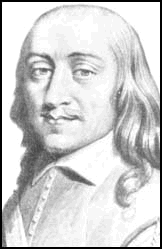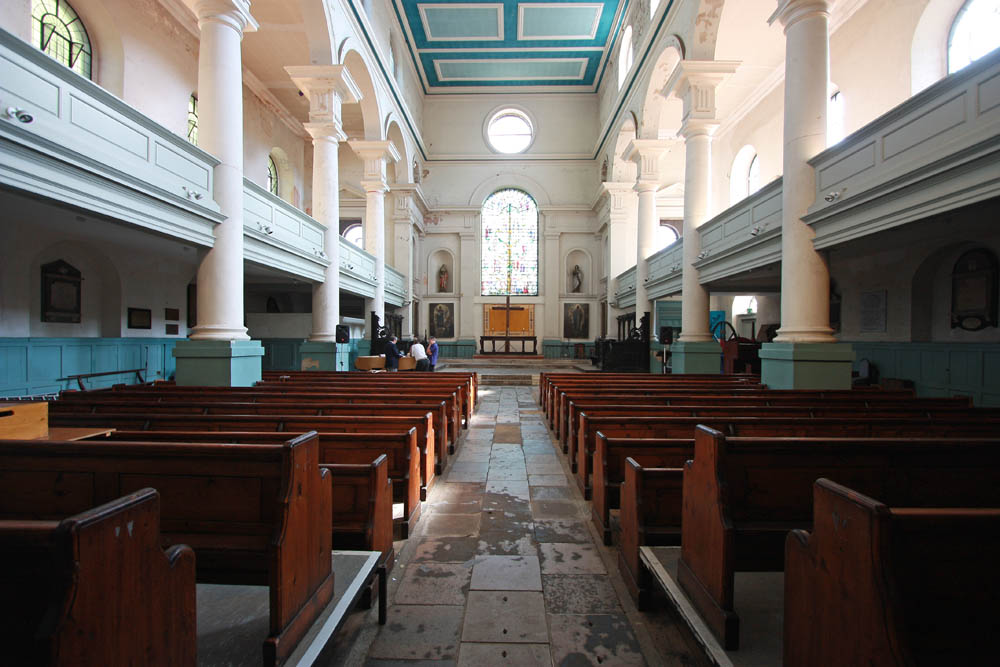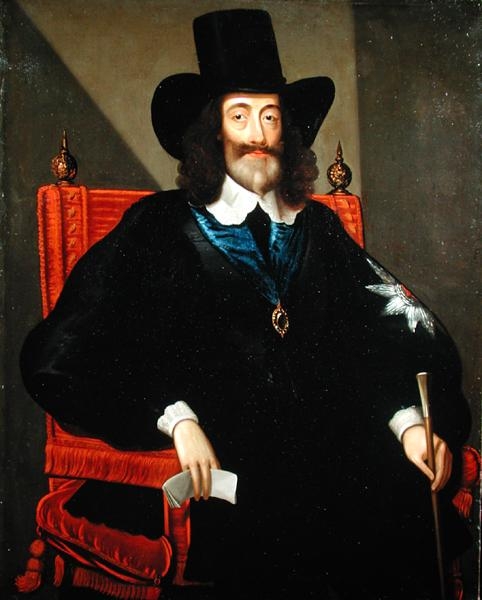|
John Wildman (died 1710)
Sir John Wildman (2 June 1693) was an English politician and soldier. Biography Wildman was born to Jeffrey and Margaret Wildman (née Poaker) in the Norfolk town of Wymondham. He was christened at Wymondham on 24 January 1621, the youngest of three children. John's mother died soon after he was born, as his father Jeffrey, who was a butcher, remarried (to Dorothie Leverich) on 2 January 1622. John may have been educated as a sizar (a poor scholar who had to work as a servant to pay his way) at Corpus Christi College, Cambridge. A John Wildman of Norfolk received a BA in 1641 and an MA from Cambridge in 1644. Wildman may have had legal training as he later described himself as an attorney or solicitor. Civil War In the English Civil War Wildman served briefly under Sir Thomas Fairfax. He became prominent, however, as a civilian adviser to the Army agitators, being in 1647 one of the leaders of that section of the army that opposed all compromise with King Charles I. Wildma ... [...More Info...] [...Related Items...] OR: [Wikipedia] [Google] [Baidu] |
Wenceslas Hollar
Wenceslaus Hollar (23 July 1607 – 25 March 1677) was a prolific and accomplished Bohemian graphic artist of the 17th century, who spent much of his life in England. He is known to German speakers as ; and to Czech speakers as . He is particularly noted for his engravings and etchings. He was born in Prague, died in London, and was buried at St Margaret's Church, Westminster. Early life After his family was ruined by the Sack of Prague in the Thirty Years' War, the young Hollar, who had been destined for the legal profession, decided to become an artist. The earliest of his works that have come down to us are dated 1625 and 1626; they are small plates, and one of them is a copy of a "Virgin and Child" by Dürer, whose influence upon Hollar's work was always great. In 1627 he was in Frankfurt where he was apprenticed to the renowned engraver Matthäus Merian. In 1630 he lived in Strasbourg, Mainz and Koblenz, where Hollar portrayed the towns, castles, and landscapes of the ... [...More Info...] [...Related Items...] OR: [Wikipedia] [Google] [Baidu] |
William Walwyn
William Walwyn (''bap.'' 1600–1681) was an English pamphleteer, a Leveller and a medical practitioner. Life Walwyn was a silkman in London who took the parliamentary side in the English Civil War. He advocated religious toleration and emerged as a leader of the Levellers in 1647, which led to his imprisonment in 1649. In October 1645 Walwyn published ''England's Lamentable Slaverie'', his famous rebuke to John Lilburne, in which he criticised his fellow Leveller for a misguided reliance on the Magna Carta of 1225 as the foundation for citizens' rights. He argued that Magna Carta was "more precious in your ilburne'sesteem than it deserveth", dismissing it as a small set of concessions "wrestled out of the pawes" of Norman conquerors and describing it as, "a messe of pottage" and, (in the following year), "but a beggerly thing containing many marks of intollerable bondage". Walwyn's critique of the appeal to Magna Carta was compelling and fundamentally accurate, and he proposed i ... [...More Info...] [...Related Items...] OR: [Wikipedia] [Google] [Baidu] |
Levellers
The Levellers were a political movement active during the Wars of the Three Kingdoms who were committed to popular sovereignty, extended suffrage, equality before the law and religious tolerance. The hallmark of Leveller thought was its populism, as shown by its emphasis on equal natural rights, and their practice of reaching the public through pamphlets, petitions and vocal appeals to the crowd. The Levellers came to prominence at the end of the First English Civil War (1642–1646) and were most influential before the start of the Second Civil War (1648–49). Leveller views and support were found in the populace of the City of London and in some regiments in the New Model Army. Their ideas were presented in their manifesto " Agreement of the People". In contrast to the Diggers, the Levellers opposed common ownership, except in cases of mutual agreement of the property owners. They were organised at the national level, with offices in a number of London inns and taverns such ... [...More Info...] [...Related Items...] OR: [Wikipedia] [Google] [Baidu] |
Dictionary Of National Biography
The ''Dictionary of National Biography'' (''DNB'') is a standard work of reference on notable figures from British history, published since 1885. The updated ''Oxford Dictionary of National Biography'' (''ODNB'') was published on 23 September 2004 in 60 volumes and online, with 50,113 biographical articles covering 54,922 lives. First series Hoping to emulate national biographical collections published elsewhere in Europe, such as the ''Allgemeine Deutsche Biographie'' (1875), in 1882 the publisher George Smith (1824–1901), of Smith, Elder & Co., planned a universal dictionary that would include biographical entries on individuals from world history. He approached Leslie Stephen, then editor of the ''Cornhill Magazine'', owned by Smith, to become the editor. Stephen persuaded Smith that the work should focus only on subjects from the United Kingdom and its present and former colonies. An early working title was the ''Biographia Britannica'', the name of an earlier eighteen ... [...More Info...] [...Related Items...] OR: [Wikipedia] [Google] [Baidu] |
Charles Harding Firth
Sir Charles Harding Firth (16 March 1857 – 19 February 1936) was a British historian. He was one of the founders of the Historical Association in 1906. Career Born in Sheffield, Firth was educated at Clifton College and at Balliol College, Oxford. At university he received the Stanhope prize for an essay on Richard Wellesley, 1st Marquess Wellesley in 1877 and was a member of the exclusive Stubbs Society for high-achieving historians. He became lecturer at Pembroke College in 1887, and fellow of All Souls College in 1901. He was Ford's lecturer in English history in 1900, was elected FBA in 1903 and became Regius Professor of Modern History at Oxford in succession to Frederick York Powell in 1904. Firth's historical work was almost entirely confined to English history during the time of the English Civil War and the Commonwealth; and although he is somewhat overshadowed by S. R. Gardiner, who wrote about the same period, his books were highly regarded. Teaching vs scholar ... [...More Info...] [...Related Items...] OR: [Wikipedia] [Google] [Baidu] |
Newgate Prison
Newgate Prison was a prison at the corner of Newgate Street and Old Bailey Street just inside the City of London, England, originally at the site of Newgate, a gate in the Roman London Wall. Built in the 12th century and demolished in 1904, the prison was extended and rebuilt many times, and remained in use for over 700 years, from 1188 to 1902. For much of its history, a succession of criminal courtrooms were attached to the prison, commonly referred to as the "Old Bailey". The present Old Bailey (officially, Central Criminal Court) now occupies much of the site of the prison. In the late 1700s, executions by hanging were moved here from the Tyburn gallows. These took place on the public street in front of the prison, drawing crowds until 1868, when they were moved into the prison. History In the early 12th century, Henry II instituted legal reforms that gave the Crown more control over the administration of justice. As part of his Assize of Clarendon of 1166, he requi ... [...More Info...] [...Related Items...] OR: [Wikipedia] [Google] [Baidu] |
St Leonard's, Shoreditch
St Leonard's, Shoreditch, is the ancient parish church of Shoreditch, often known simply as Shoreditch Church. It is located at the intersection of Shoreditch High Street with Hackney Road, within the London Borough of Hackney in East London. The current building dates from about 1740 and is Grade I listed. The church is mentioned in the line ""When I grow rich", say the bells of Shoreditch" from the nursery rhyme ''Oranges and Lemons''.The Centre of Attention at Shoreditch Church'' accessed 06/01/08 The beneath the church is the final resting place of many actors from the |
Edward Hyde, 1st Earl Of Clarendon
Edward Hyde, 1st Earl of Clarendon (18 February 16099 December 1674), was an English statesman, lawyer, diplomat and historian who served as chief advisor to Charles I during the First English Civil War, and Lord Chancellor to Charles II from 1660 to 1667. Hyde largely avoided involvement in the political disputes of the 1630s until elected to the Long Parliament in November 1640. Like many moderates, he felt attempts by Charles to rule without Parliament had gone too far but by 1642 felt its leaders were, in turn, seeking too much power. A devout believer in an Episcopalian Church of England, his opposition to Puritan attempts to reform it drove much of his policy over the next two decades. He joined Charles in York shortly before the First English Civil War began in August 1642, and initially served as his senior political advisor. However, as the war turned against the Royalists, his rejection of attempts to build alliances with Scots Covenanters or Irish Catholics led to ... [...More Info...] [...Related Items...] OR: [Wikipedia] [Google] [Baidu] |
John Lilburne
John Lilburne (c. 161429 August 1657), also known as Freeborn John, was an English people, English political Leveller before, during and after the English Civil Wars 1642–1650. He coined the term "''freeborn, freeborn rights''", defining them as natural rights with which every human being is born, as opposed to rights bestowed by government or human law. In his early life he was a Puritan, though towards the end of his life he became a Quaker. His works have been cited in opinions by the Supreme Court of the United States, United States Supreme Court. Early life John Lilburne was the son of Richard House of Lilburn, Lilburne, heir to "a modest manorial holding" at Thickley Punchardon near Bishop Auckland, County Durham, and his wife Margaret (d. 1619), daughter of Thomas Hixon. He was probably born in Sunderland, Tyne and Wear, Sunderland, but the exact date of his birth is unknown; there is some dispute as to whether he was born in 1613, 1614, or 1615. His father, Richard Lil ... [...More Info...] [...Related Items...] OR: [Wikipedia] [Google] [Baidu] |
Agreement Of The People
Agreement may refer to: Agreements between people and organizations * Gentlemen's agreement, not enforceable by law * Trade agreement, between countries * Consensus, a decision-making process * Contract, enforceable in a court of law ** Meeting of the minds (a.k.a. mutual agreement), a common understanding in the formation of a contract * Pact, convention, or treaty between nations, sub-national entities, organizations, corporations Arts and media *''Agreement'', a 1978 book of poetry by Peter Seaton * ''Agreement'' (film), a 1980 Bollywood film Science and mathematics * Agreement (linguistics) or ''concord'', a change in the form of a word depending on grammatical features of another word * Consistency, logical agreement between two or more propositions * Reliability (statistics) in the sense of, for example, inter-rater agreement Other uses * Agreement (political party), a Polish political party * Operation Agreement, a British 1942 military operation during the Western Dese ... [...More Info...] [...Related Items...] OR: [Wikipedia] [Google] [Baidu] |
Putney Debates
The Putney Debates, which took place from 28 October to 8 November 1647, were a series of discussions over the political settlement that should follow Parliament's victory over Charles I in the First English Civil War. The main participants were senior officers of the New Model Army who favoured retaining Charles within the framework of a Constitutional monarchy, and radicals such as the Levellers who sought more sweeping changes, including One man, one vote and Freedom of thought, particularly in religion. Alarmed by what they viewed as the dangerous radicalism and increasing power of the New Model Army, in March 1647 the Presbyterian moderates who dominated the Long Parliament ordered it to disband, a demand which was refused. In June, the army removed Charles from the custody of Parliament and in August established its headquarters at Putney, just outside the City of Westminster in South West London. Its senior officers or "Grandees" hoped the debates would end political divi ... [...More Info...] [...Related Items...] OR: [Wikipedia] [Google] [Baidu] |
Council Of The Army
The Army Council was a body established in 1647 to represent the views of all levels of the New Model Army. It originally consisted of senior commanders, like Sir Thomas Fairfax, and representatives elected by their regiments, known as Agitators. Following the Putney Debates of October to November 1647, Fairfax, Oliver Cromwell and Henry Ireton grew concerned by their radicalism, and in 1648, Agitators were removed from the Council. Now dominated by the so-called Grandees, it became the Council of Officers. Background When the First English Civil War began in 1642, the vast majority on both sides believed a 'well-ordered' monarchy was divinely mandated. They disagreed on what 'well-ordered' meant, and who held ultimate authority in clerical affairs. Royalists generally supported a Church of England governed by bishops, appointed by, and answerable to, the king; Puritans believed he was answerable to the leaders of the church, appointed by their congregations. However, 'Puritan ... [...More Info...] [...Related Items...] OR: [Wikipedia] [Google] [Baidu] |







